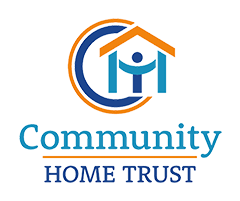Guest Post: Inclusionary Housing

As we continue celebrating our 30th birthday throughout the year, we asked our former Executive Director, Robert Dowling, for his reflections on his 20+ years at the helm of Community Home Trust. In this post, he shares why inclusionary housing is so important to homeowners, taxpayers, and local governments in Orange County. You can learn more about Chapel Hill’s Inclusionary Housing Ordinance here.
We are fortunate to live in Orange County for many reasons, including the compassionate stance our local elected officials take towards low income people, particularly with regard to housing. In normal times, neither the state nor the federal government provide significant housing assistance to low income individuals and families.
As we return to normal, low income folks, and particularly very low income people, meaning those earning less than 50% of the median income, will again struggle to find housing they can afford. With home prices escalating rapidly in the past year, many lower income families are losing ground in their efforts to purchase a home they can afford. For those who rent, despite the growing inventory of newly constructed apartments, rents remain out of reach for those with low paying jobs.
When nonprofit organizations develop affordable homes, they require large amounts of subsidy, which typically come from the local governments. However, when developers include affordable homes in new neighborhoods, such as Chandler Woods on Homestead Road, far less public subsidy is necessary. That’s because the inclusionary housing ordinance requires developers to provide homes that are priced to be affordable to low-income families. Although many of these inclusionary homes will still require some public subsidy, it will be far less than would be the case if Community Home Trust (or any other nonprofit) were to develop the same homes themselves.
In my opinion, inclusionary housing is good for our community because it allows affordable homes to be integrated into market-rate neighborhoods. This allows for socio-economic integration, and frequently, racial and ethnic integration as well. In addition, inclusionary housing has the additional benefit of enabling the creation of affordable homes without the expenditure of significant amounts of public subsidy. The more ownership homes that we can create through inclusionary housing, the less subsidy funds we will spend (per home). That leaves more public subsidy funds available to create housing for very low income households. I think that’s a win-win.





